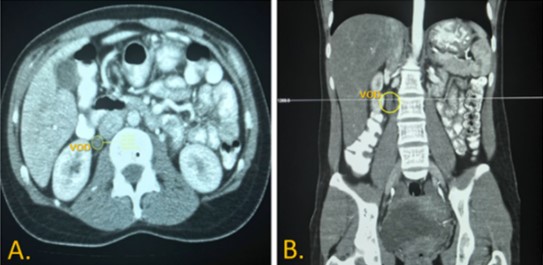Resumen
El presente artículo explora la percepción de los profesores del Departamento de Morfología de la Facultad de Medicina de la Universidad Javeriana en Bogotá, Colombia, sobre los ajustes que se requirieron en los procesos de enseñanza- aprendizaje, como consecuencia de un cambio abrupto de modelo presencial a remoto, en respuesta a las nuevas circunstancias que impuso el manejo de la pandemia Covid - 19.
Como metodología, se diseñó un estudio descriptivo de corte transversal mediante la aplicación de una encuesta dirigida a los profesores del departamento. Los resultados del estudio muestran que el tiempo de adaptación de los profesores fue relativamente largo con relación a la inmediatez necesaria para asumir el cambio de modelo, lo que indica cierta dificultad para el proceso. Como problemas se señalaron ruido en las casas, dolores musculares, baja participación de los estudiantes, tiempo insuficiente para abordar temas, mayor tiempo para explicar estructuras tridimensionales, imposibilidad de disecar cadáveres, sonido entrecortado, lenta carga de archivos y falta de contacto espontáneo con los estudiantes en los tiempos entre clases. Se resaltó el uso de canales alternativos de comunicación para resolver dudas, apoyar problemas emocionales o coordinar actividades. Finalmente, los profesores valoraron como positivo la continuación del programa, enriquecido con nuevas tecnologías que llegaron para quedarse.
. Grzych G, Schraen-Maschke S. Interactive pedagogical tools could be helpful
for medical education continuity during COVID-19 outbreak. Ann Biol Clin
(Paris). 2020 Aug 1;78(4):446-448.
Saverino D. Teaching anatomy at the time of COVID‐19. Clinical Anatomy.
;1:1.
Sahi PK, Mishra D, Singh T. Medical Education Amid the COVID-19
Pandemic. Indian Pediatr. 2020 Jul 15;57(7):652-657.
Li HO, Bailey A. Medical Education Amid the COVID-19 Pandemic: New
Perspectives for the Future. Academic Medicine. 2020 Jul.
Moszkowicz D, Duboc H, Dubertret C, et al. Daily medical education for confined
students during coronavirus disease 2019 pandemic: A simple videoconference
solution. Clinical Anatomy. 2020 Sep;33(6):927-928.
Lucey C, Johnston S. The Transformational Effects of COVID-19 on
Medical Education. JAMA.2020;324(11):1033-1034.
Iwanaga J, Loukas M, Dumont A., Shane Tubbs R. A review of anatomy
education during and after the COVID‐19 pandemic: Revisiting traditional and
modern methods to achieve future innovation. Clinical Anatomy. 2020;1-7
Dobson H, Pearl R, Orsay C, et al. Virtual reality: new method of teaching
anorectal and pelvic floor anatomy. Dis Colon Rectum. 2003;46(3):349-52.
Hidebrandt S. Lessons to be learned from the history of anatomical
teaching in the United States: The example of the University of Michigan.
Anatomical Sciences Education. 2010; 3:202–212.
Parker E, Reder N, Glasser D, et al. NDER: A Novel Web Application for
Teaching Histology to Medical Students. Acad Pathol. 2017 Feb 10.
Kazzazi F, Barlett J. Condensing embryology teaching for medical
students: can it be taught in 2 hours? Adv Med Educ Pract. 2017;
(8):797-806.
Alvarez S, Cuellar C, López B, et al. Actitudes de los profesores ante la
integración de las TIC en la práctica Docente: estudio de un grupo de la
Universidad de Valladolid. Edutec: Revista electrónica de tecnología
educativa. 2011;35.
Valencia T, Serna A, Ochoa S, et al. Competencias y estándares TIC desde
la dimensión pedagógica: Una perspectiva desde los niveles de
apropiación de las TICs en la práctica educativa docente.2016. Pontificia
Universidad Javeriana – Cali.
Taquez H, Rengifo D, Medía D. Diseño de un instrumento para evaluar el
nivel de uso y apropiación de las TIC en una institución de educación
superior. Portal Educativo de las Américas, Organización de los Estados
Americanos.2017.
Langfield T, Colthorpe K, Ainscough L. Online instructional anatomy
videos: Student usage, self‐efficacy, and performance in upper limb regional
anatomy assessment. Anatomical Sciences Education. 2018;11:461–470.
Ammar A, Brach M, Trabelsi K, et al. Effects of COVID-19 Home
Confinement on Eating Behaviour and Physical Activity: Results of the
ECLB-COVID19 International Online Survey. Nutrients. 2020; 28,12(6):1583
Klassen R, Durksen T. Weekly self-efficacy and work stress
during the teaching practicum: A mixed methods study. Learning and
Instruction. 2014; 33:158-169.
Caena F, Redecker C. Alineación de los marcos de competencia del
profesorado con los desafíos del siglo XXI: El caso del Marco Europeo de
Competencia Digital para Educadores (Digcompedu). Diario Europeo de
Educación. 2019; 54(3):356–369.
König J, Jäger-Biela D, Glutsch N. Adapting to online teaching during
COVID-19 school closure: teacher education and teacher competence
effects among early career teachers in Germany. European Journal of
Teacher Education. 2020; 43(4): 608-622.
Schmidt S, Tschida C, Hodge D. How faculty learn to teach online: What
administrators need to know. Online J Dist Learn Admin. 2016;19:1– 10.
Bandura A. Self-efficacy: Toward a unifying theory of behavioral change.
Psychological Review. 1977;84(2):191–215.
Lauermann F, König J. Teachers’ Professional Competence and Wellbeing:
Understanding the Links between General Pedagogical Knowledge, Self-
efficacy and Burnout. Learning and Instruction. 2016;45:9–19.
Tschannen-Moran, Hoy A. Teacher Efficacy: Capturing an Elusive
Construct. Teaching and Teacher Education. 2001;17(7):783–805.

Esta obra está bajo una licencia internacional Creative Commons Atribución 4.0.
Derechos de autor 2021 María Lucía Gutiérrez Gómez, Michelle Cortes Barré, Angelika Kuhlmann Lüdeke, , Javier Fabricio Guillén Olaya, Pablo Enrique Alvarado Valencia, María Claudia Sánchez Zúñiga, Ananías García Cardona, Carmen Alicia Mera Laso, Luis Fernando González López, Jorge Andrés Franco Zuluaga


